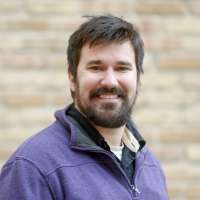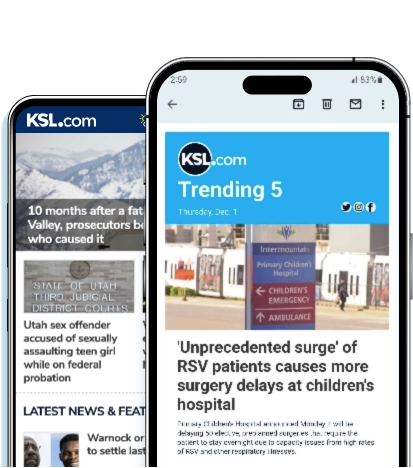- More evacuations have been issued because of the Monroe Canyon Fire in central Utah.
- Monroe Canyon Fire containment dropped to 11% amid critical fire weather conditions.
- Red flag warnings persist because of wind and low humidity; smoke is affecting air quality.
MONROE, Sevier County — A few more evacuation orders have been issued after firefighters reported a "tough" day battling a wildfire growing in central Utah.
Evacuations were extended to the Burrville and Monroe Canyon areas, as well as parts of Poverty Flat, because of the Monroe Canyon Fire, according to Sevier County Emergency Management.
The fire also burned some of Garkane Energy Cooperative's transmission structures, the company that provides power to parts of south-central Utah reported Wednesday night. It had forced the company to de-energize some of its transmission lines earlier in the day. That led to an outage that impacted Burrville, as well as areas like Antimony, Fish Lake, Koosharem and parts of Wayne County, which will now last until at least Thursday morning.
An update on the situation is expected after crews can access the impacted sites, the power provider added. Sevier County officials had warned residents to prepare for outages that could last for an "extended period."
State Route 24 was briefly closed between state Route 119 and state Route 62 in the area because of "poor visibility and fire activity" Wednesday evening, but it has since reopened, according to the Utah Department of Transportation.
The updates come as containment of the fire has dropped while "critical" fire weather conditions continue to impact firefighting operations in the region.
"Today was tough. ... Today was humbling," said Trent Ingram, commander of the Great Basin Complex Incident Management Team No. 5, during a public meeting in Richfield Wednesday night. "You just can't predict the fire and what it's going to do. ... We lost the battle today (but) haven't lost the war yet."
The Monroe Canyon Fire had grown to 36,637 acres by Wednesday morning, surpassing the France Canyon Fire as Utah's largest wildfire this year. It's now the state's largest wildfire in five years, as well.
Containment of the fire also dropped from 16% on Tuesday to 11% on Wednesday, as the fire continues to grow. A mixture of strong wind gusts, low relative humidity and warmth prompted the National Weather Service to issue a series of red flag warnings within central and southwest Utah this week. Those warnings state that "any new fire starts or existing fires may spread rapidly" because of the weather conditions.
Monroe Canyon Fire activity has "quickly increased" because of the "record-breaking low fuel moistures" in the area, federal firefighters wrote in their Wednesday report. Despite having over 1,000 firefighters assigned to the fire and "throwing everything at it," conditions were severe enough that it ended in evacuations, power outages and temporary road closures, Ingram said.
It's also made it difficult to slow down the fire even in previously treated areas. Similar issues were reported on Monday.
Relative humidity typically increases at night, helping slow down the spread of wildfires — but that hasn't been the case with the Monroe Canyon Fire, said Caleb Cravens, an incident meteorologist assigned to the fire this week, during another community meeting on Monday. That's factored into the fire's massive growth, helping it triple in size over the past five days.
Monsoonal moisture returned to the West this week, but most of that is east and west of the state, said KSL meteorologist Matt Johnson. The lone upside is that it may lower the risk of dry lightning in the area.
Very dry and breezy conditions will continue through Thursday, bringing areas of critical fire weather conditions to a large portion of central and southern Utah. Avoid any activities that produce sparks! pic.twitter.com/FoVU7TqRYQ
— NWS Salt Lake City (@NWSSaltLakeCity) July 30, 2025
Red flag warnings will likely remain in the area through rest of the week, fire meteorologists said Wednesday night. Even if warnings aren't issued, they said conditions will likely remain poor for firefighting efforts into early next week.
Utah Lt. Gov. Deidre Henderson attended the meeting to relay the state's support for the affected communities.
"We've got your back, and we're here for whatever it is you need," she said. "Just know that our hearts and our prayers and our thoughts and our actions are all with you."
A local emergency was issued and approved by the state, but she said it's unclear yet if the state will issue an emergency in response to the fire, after being asked about it during the meeting. That's ultimately up to Gov. Spencer Cox, and any order would have to be approved by the Utah Legislature if it were to stretch beyond 30 days, she noted.
Cox is expected to attend another community meeting planned for Friday night.
New fire restrictions are also headed to the region. An order implementing Stage 2 fire restrictions at Fishlake National Forest will go into place on Friday, said Mike Elson, the forest's supervisor. The order will ban campfires and other open fires in the area.
"It's very important that we don't have any additional fires start ... and draw away resources," he said.
Smoke lingers near fires
Smoke from the fire has made its way to communities north of it over the last few days due to southwest winds. Some haziness has set up over the Wasatch Front over the past few days, as well, but Johnson said communities directly north and east of the fire, like Price, will continue to receive the thickest smoke as long as winds arrive from the south and southwest.
The International Space Station even captured images of the fire's smoke path this week, along with the much larger Dragon Bravo Fire at Grand Canyon National Park, which has blown into southeast Utah.
Wildfire smoke from #MonroeFire visible from the @Space_Station - captured live from @sen's 4K external camera platform at 2:26 pm MDT today.
— ISS Above (@ISSAboveYou) July 28, 2025
Note: the pass finishes over Wyoming, showing the extent of the smoke, including from other fires in Arizona.@SLCgov@provocity… pic.twitter.com/yMlSmvtw2C
The smoke can lower air quality levels, especially in areas where it is the thickest.
"Smoke from wildfires could cause high concentrations of particulates. If smoke becomes thick, persons with existing heart or respiratory ailments should reduce physical exertion and outdoor activity," Utah Division of Air Quality officials wrote in an air quality report Wednesday.









